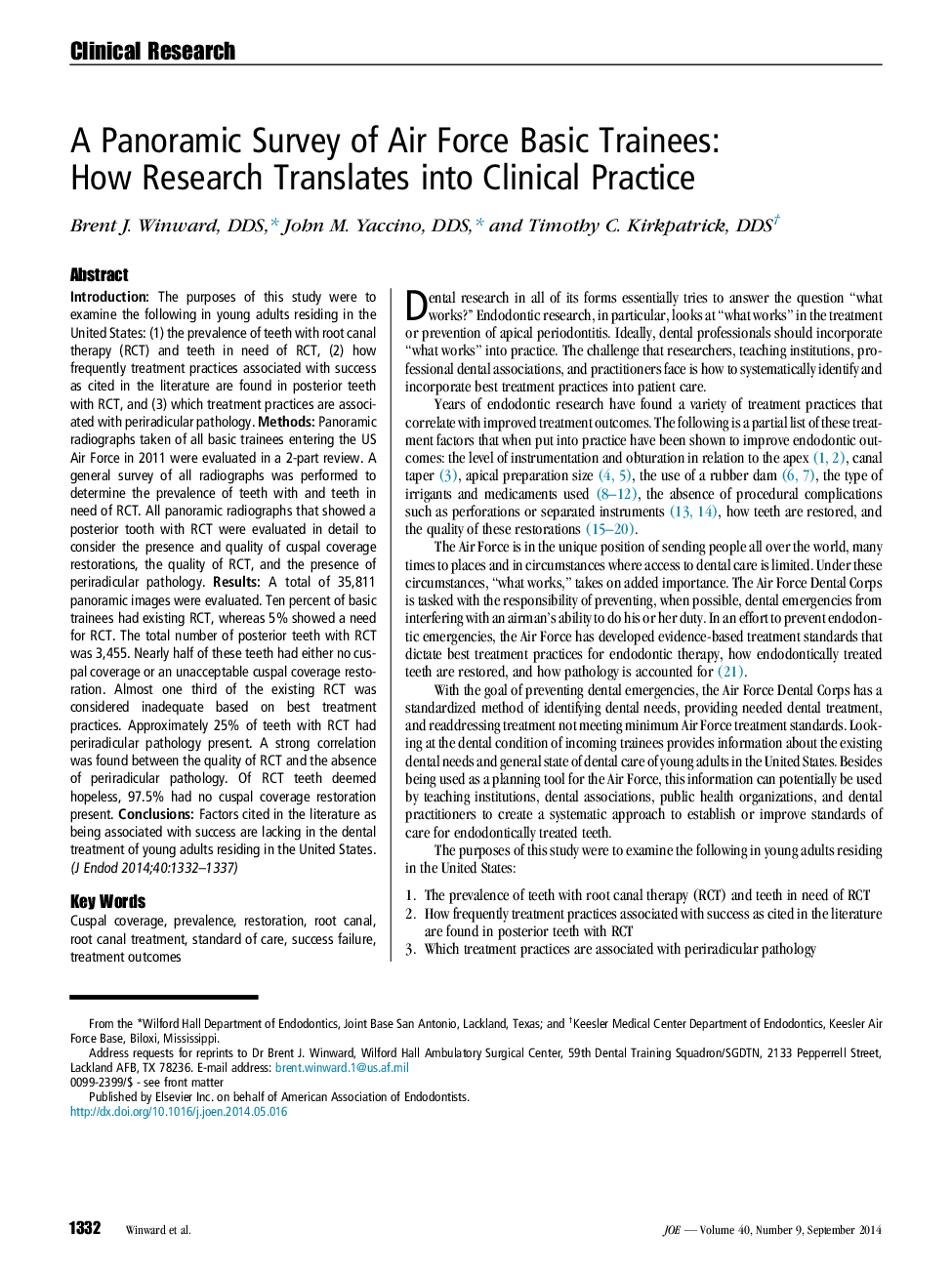| Article ID | Journal | Published Year | Pages | File Type |
|---|---|---|---|---|
| 3147746 | Journal of Endodontics | 2014 | 6 Pages |
IntroductionThe purposes of this study were to examine the following in young adults residing in the United States: (1) the prevalence of teeth with root canal therapy (RCT) and teeth in need of RCT, (2) how frequently treatment practices associated with success as cited in the literature are found in posterior teeth with RCT, and (3) which treatment practices are associated with periradicular pathology.MethodsPanoramic radiographs taken of all basic trainees entering the US Air Force in 2011 were evaluated in a 2-part review. A general survey of all radiographs was performed to determine the prevalence of teeth with and teeth in need of RCT. All panoramic radiographs that showed a posterior tooth with RCT were evaluated in detail to consider the presence and quality of cuspal coverage restorations, the quality of RCT, and the presence of periradicular pathology.ResultsA total of 35,811 panoramic images were evaluated. Ten percent of basic trainees had existing RCT, whereas 5% showed a need for RCT. The total number of posterior teeth with RCT was 3,455. Nearly half of these teeth had either no cuspal coverage or an unacceptable cuspal coverage restoration. Almost one third of the existing RCT was considered inadequate based on best treatment practices. Approximately 25% of teeth with RCT had periradicular pathology present. A strong correlation was found between the quality of RCT and the absence of periradicular pathology. Of RCT teeth deemed hopeless, 97.5% had no cuspal coverage restoration present.ConclusionsFactors cited in the literature as being associated with success are lacking in the dental treatment of young adults residing in the United States.
